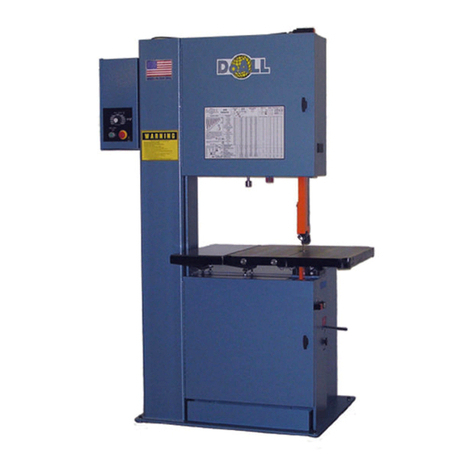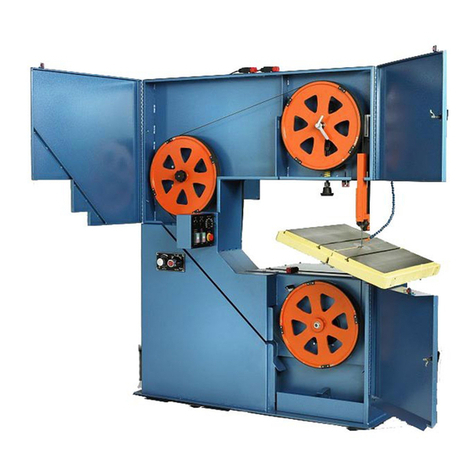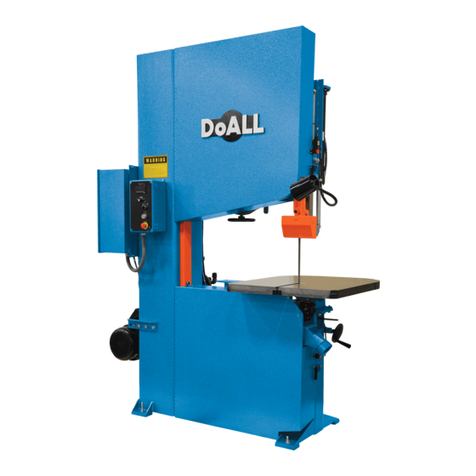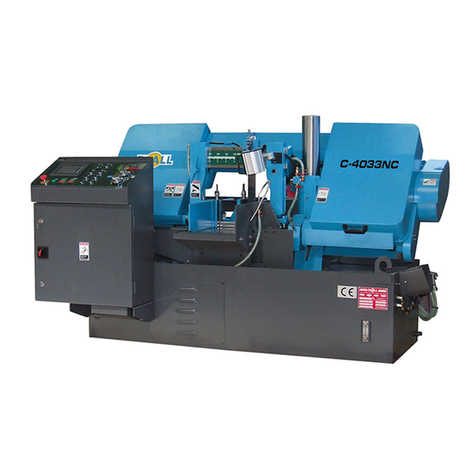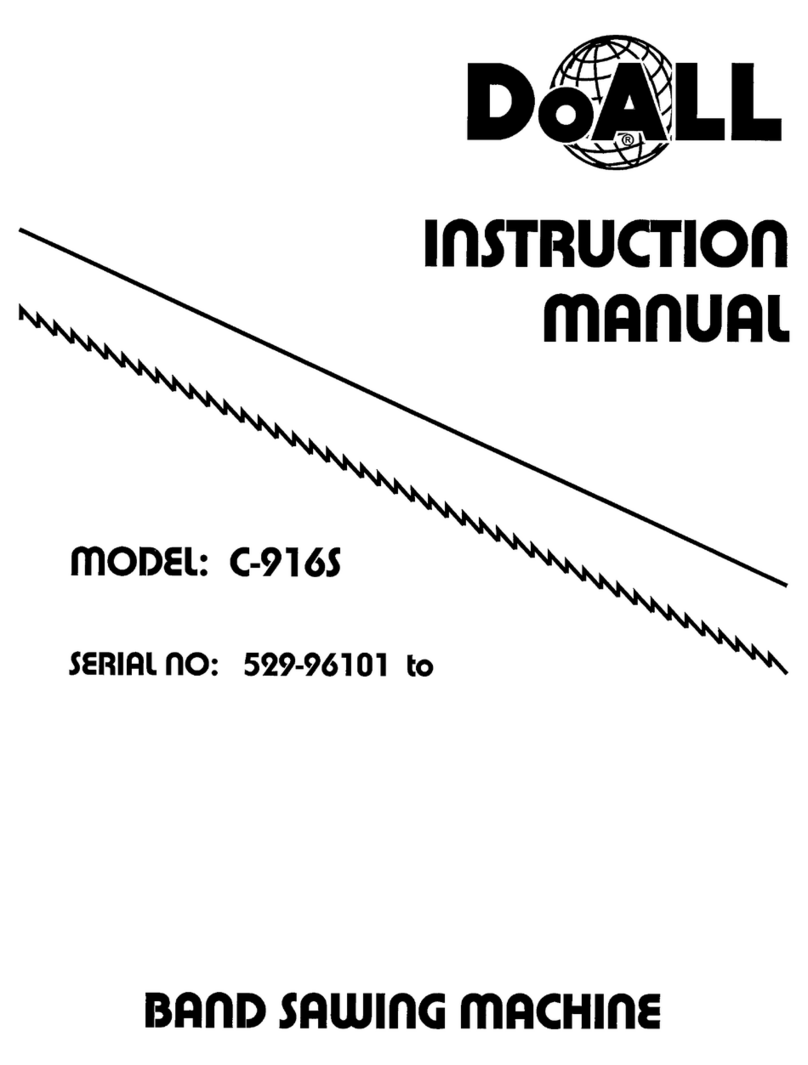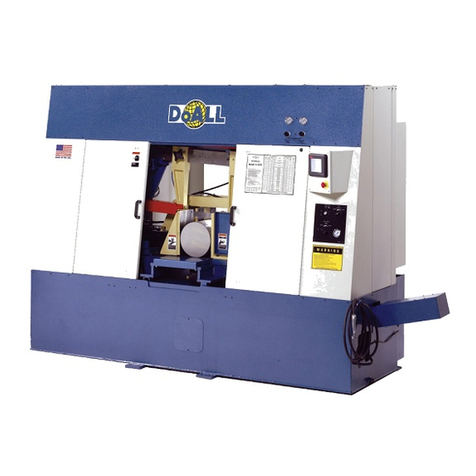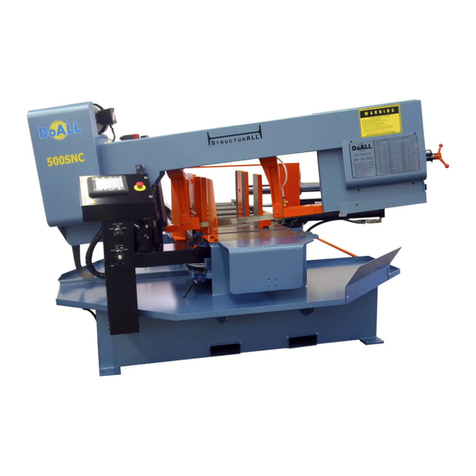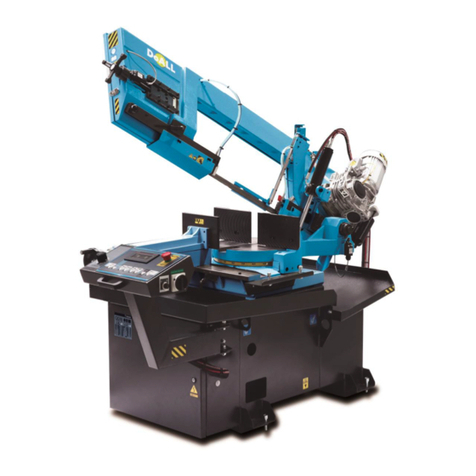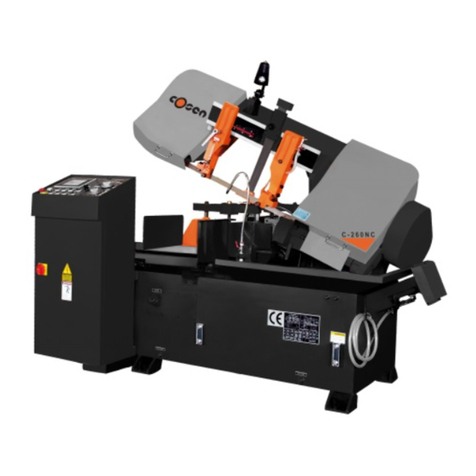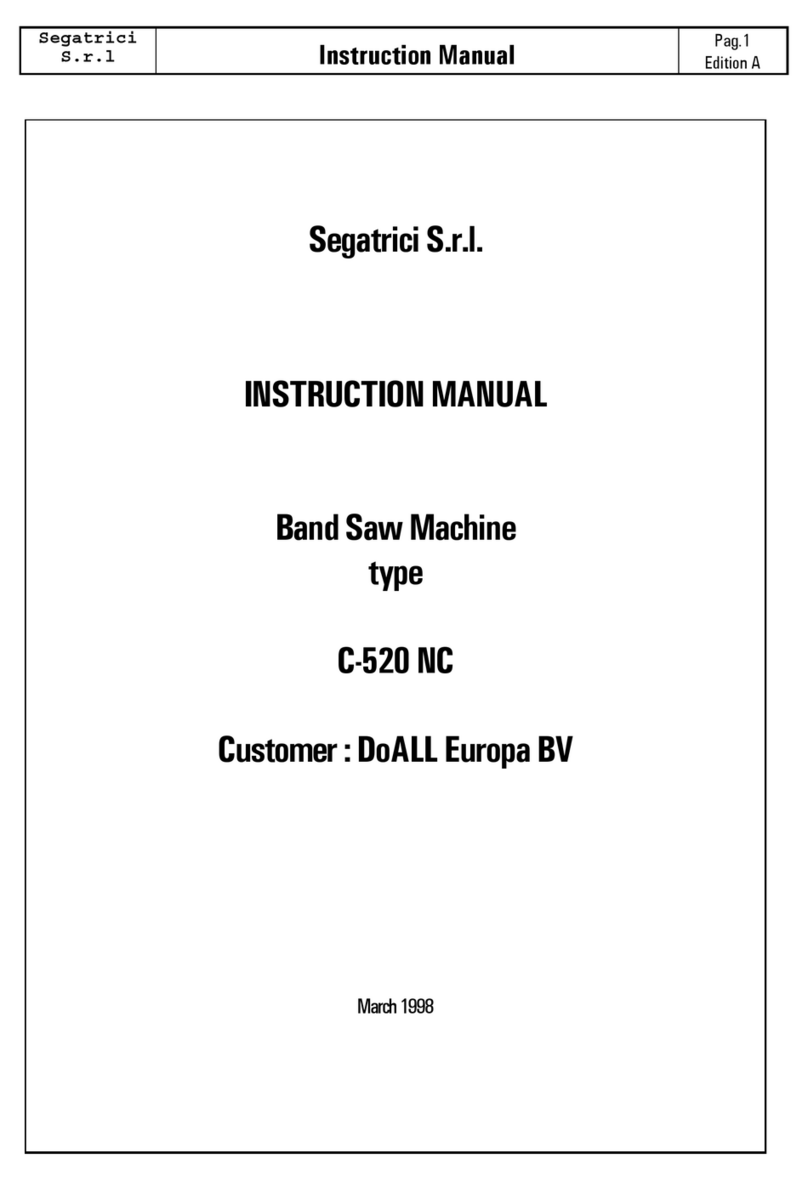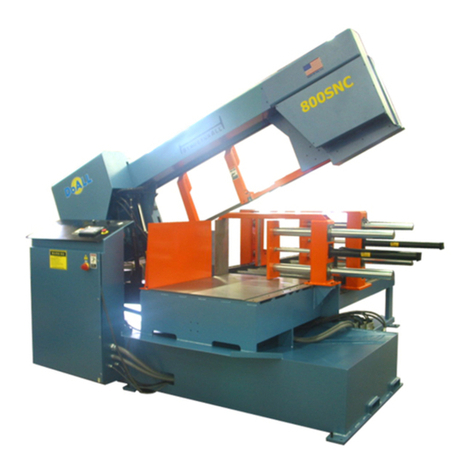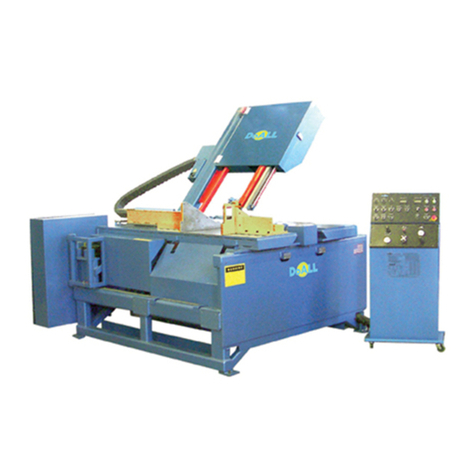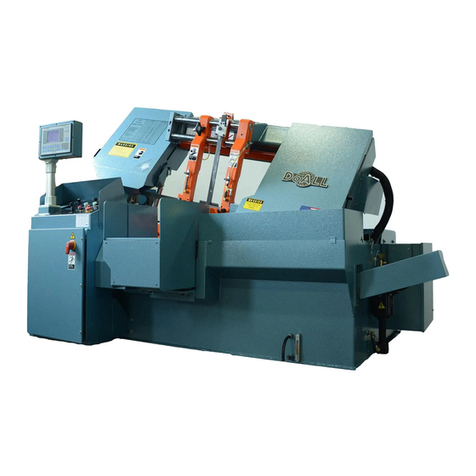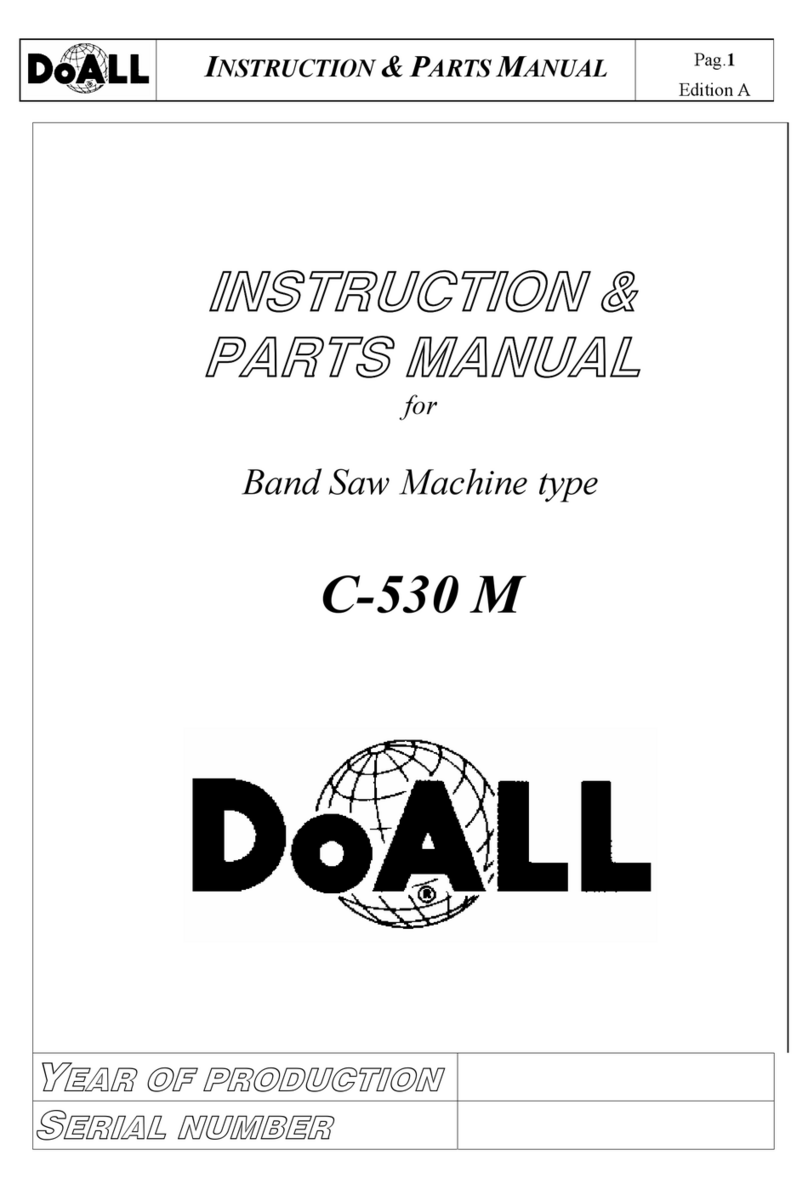4
1. SAFETY RULES
1.1 CLOTHING
To protect the operator from entangling or clamping by the machine, the operator must
remove gloves and beware of loose clothing. Before operating the machine, wear safety
shoes to avoid foot injury by waste material.
1.2 INSTALLATION
The machine must be properly grounded to avoid danger by electric shock. Use durable
insulating material to cover the power wires placed on the floor to avoid electric shock.
1.3 Be sure to tighten all guards before operating the machine.
1.4 While the machine is running, never try to touch the saw blade. Failure to comply may result
in accident by entangling.
1.5 During operation, if you need to check the interior of the machine, wait until the machine
has come to a complete stop before opening any guards.
1.6 Do not enter into the workpiece moving area. Lifting of the work pieces to the work piece
supporting is done by using an electric hoist, which is to be operated only by qualified
personnel.
1.7 Do not try to touch the circuit breaker, switches or buttons with wet hands.
1.8 Turn power off before maintaining or cleaning the machine.
1.9 Wear gloves for replacing saw blade, removing chips, replacing cutting fluid and moving
work pieces. Do not touch the teeth of the saw blade.
1.10 The coolant is not edible. If any should accidentally enter the mouth, spit it out immediately
and rinse mouth.
1.11 Do not operate the machine, maintain or check the machine under the influence of alcohol
or medication.
1.12 The machine will stop when safety guard is opened. While the machine is running, opening
the guard will cause the power to shut off but the running parts do not stop immediately and
can still cause danger. Be sure to open the safety guard only when the machine has come
to a complete stop.
1.13 Do not stand on the front or rear supporting rollers to avoid accident by slipping.
1.14 Be sure to perform a machine check before starting and check periodically. After the job is
finished, clean both the machine and the working area thoroughly.
1.15 The machine operator must be well trained. The training course takes one week, including
machine operation, workpiece lifting, saw blade replacement, and machine maintenance.
1.16 The machinery maintenance personnel must have knowledge of electric control and must
be well trained.
1.17 Do not apply the machine for cutting work pieces such as food, wood, plastic, poisonous
material, magnesium or magnesium alloy. This machine is designed for cutting steel bars
and profiled steel tubes only.
